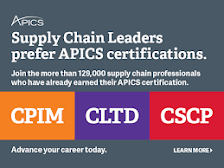International Trade theories Apics question
- Get link
- X
- Other Apps
International Trade theories & Apics question
Ok !!! So this is one of Favorite topic of APICS(ASCM).. In CSCP & CLTD they must pull one or two question from this Topic.. Why ???
Because This Topic has some basic key Theories about Product Development & Its Economic and societal Catalyst and How these things has evolved International Trade..
The First Theory i want to start with that is famous one..
- Theory of absolute advantage - Introduced Nearly 250 Year ago by Adam smith , the theory of absolute advantage. It was one of initial foundation for explaining why countries would want to trade goods with each other, Providing an economic basis for free trade among some countries . Adam smith described it in simplest way --- IF TWO COUNTRIES SAME PRODUCT AT DIFFERENT COST OF PRODUCTION. IT WOULD BE BENEFICIAL TO TRADE.
With International trade this concept also take transportation,labour and other cost into consideration to determine the final landed cost. if it is still lower than the importing countries 's cost of production, It could be beneficial to trade.
- Theory of competitive advantage - This Theory of Comparative advantage is given by David Ricardo in 1817. It considers the ability of any country to produce a particular good or service at lower marginal as well as Lower opportunity cost over another. When a country has more resources like - Land ,labour,Capital or Entrepreneurship. They can have a comparative advantage in producing one or more products.
- International Product life cycle - It is developed by Raymond Vernon in 1966, The international product life cycle theory describe how product development and manufacturing migrate through three stages and multiples countries.
--- First stage - The product is initially designed to satisfy a market need in a developed country and as the product is widely sold in the first country the firm begins exporting it to other developed countries with similar products needs.
--- Second stage - Sales in secondary group of developed countries gain momentum and Look like products that use different patents or manufacturing process begin to be manufactured by local competitors..
--- Third Stage- The production process running smoothly and now total focus shifts on how to lower the product cost and Improvement of product with minimize cost.
Cluster Theory -- OK, So this is the theory of 90s era.. given by Michael porter. It states that a firm can develop a competitive advantage in manufacturing of certain products when it is geographically close to its suppliers or competitors - Examples of this is Silicon valley in California .
As other part of Title is Apics Question
- I want to share How Apics ask a question from These theory.. -
Type 1 - They will Give you a story based question Like this firm has done this and this & it falls under Which theory they will provide you all option..
Type 2- I have seen only in some cases that APICS ask any direct question but they here they will ask you like Concept basis direct question like they will give you a concept and ask you this concept falls under which category
Hope this blog will help you in APICS Certification exam..
-------------------------------------------------------------------------------------------------------------------------------
Buy Now : --
CSCP - Certified Supply Chain Professional 1,000 Questions with Detailed Explanations: https://amzn.to/2JTgdrT
Follow us -
Twitter - https://twitter.com/ApicsEdu
Facebook - https://www.facebook.com/Apicseduclub
Connect - http://www.apicsedu.club/ for all study material and books for APICS Certification
- Get link
- X
- Other Apps


Comments
Post a Comment